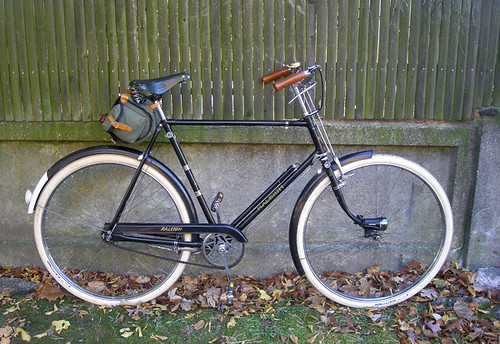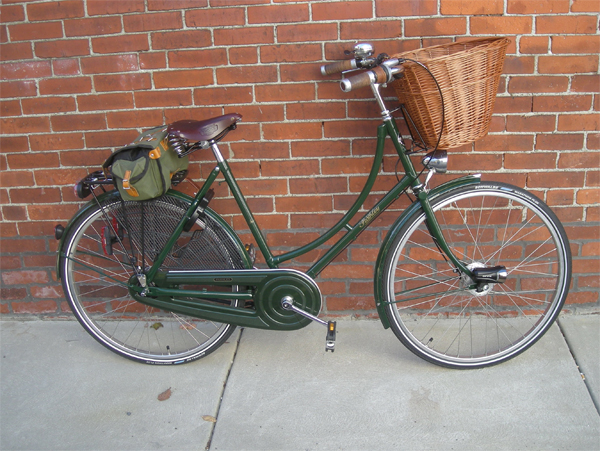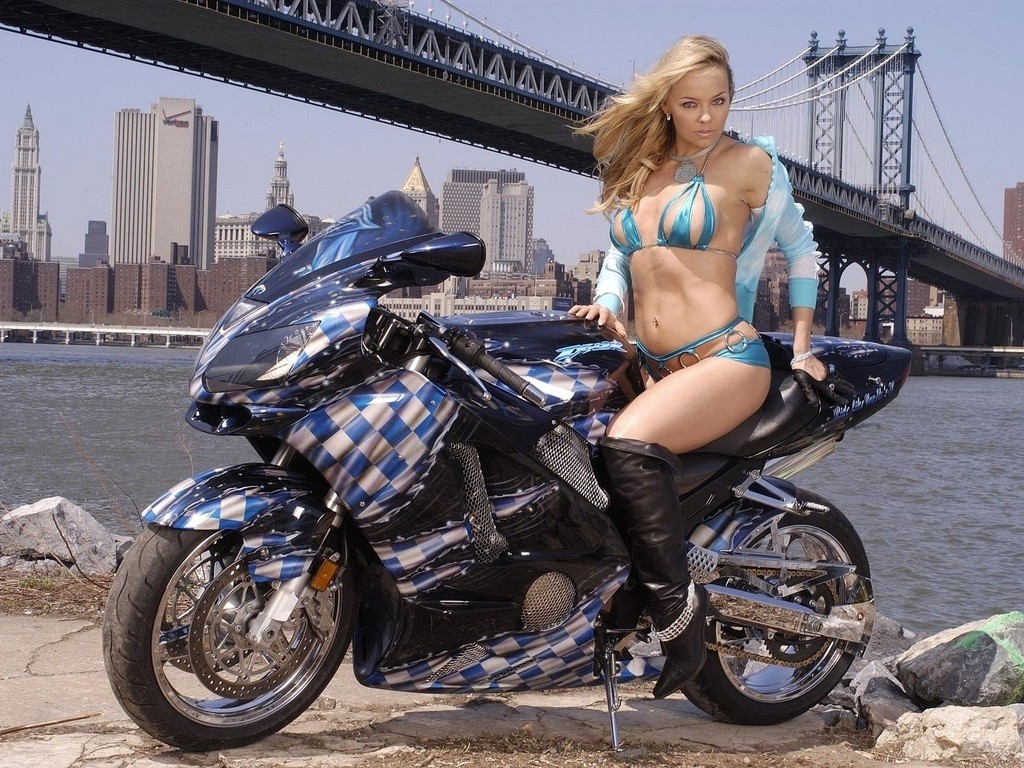DIAMOND FRAMES
The Diamond Frame - or a "men's frame" - is readily recognisable by its horizontal top tube.
 Classic Diamond Frame
Classic Diamond FrameBe it on a roadster or a roadbike, the classic diamond frame has a horizontal top tube - like the one shown on the vintage Raleigh DL-1 above and on this vintage Motobecane roadbike. For reasons I will not go into here, this is the most structurally sound way to build a frame. However, it is certainly not the most comfortable to mount: One must swing a leg over the back, or else lean the bike over quite a bit in order to step over a diamond frame bicycle.
STEP-THROUGH FRAMES
A "step-through" is a frame where one can readily step over the top tube without needing to lean the bike to the side or swing a leg over the back. This, of course, means that the top tube must be sloped so as to be positioned low to the ground. There are several popular subtypes of step-through frames:
 Straight Step-Through
Straight Step-ThroughUsually when the term "step-through" is used, it refers to a straight step-through design, where the top tube and the downtube run parallel to one another. The Raleigh Lady's Sports above is a classic example of a straight step-through.
 Loop Frame
Loop FrameA Loop Frame bicycle is a type of step-through, where the top tube is gracefully and symmetrically curved, rather than straight. The curve runs as closely as possible to the downtube, so as to maximise the easy step-over area. Dutch "Omas" and English "Lady Roadsters" (like the Pashley Princess above) are the most common examples of loop frames.
 Swan Frame
Swan FrameA less common type of step-through design is the "Swan" frame. Notice that on the bicycle in the picture above (a vintage Steyr Waffenrad from Austria), both the toptube and the downtube are curved. The tubes curve around the front wheel, forming a shape resembling a swan's neck - and allowing for the same easy step-over as the straight step-through and the loop frame. Today we can see this design on the Azor Swan and the lady's Electra Amsterdam.
MIXTE FRAMES
Mixte means "mixed" or "unisex" in French. It differs from a step-through in two ways. First, it is not quite as easy to step-over, because the positioning of the sloping top tube(s) is higher. Typically, the rider will still need to lean a mixte to the side a bit in order to climb over it. Second, a mixte possesses a key structural component that a step-though does not. If you take a look at the three examples of step-through frames above, note that the top tubes extend from the head tube (where the handlebars are) to the seat tube (where the saddle is). A mixte frame has "stays" that extend past the seat tube, all the way to the rear dropouts (see pictures below). This design element was created to strengthen the frame for long, intense rides. There are two general subtypes of mixte frames:
 Classic Mixte: Twin Lateral Stays
Classic Mixte: Twin Lateral StaysA mixte with "twin lateral stays" has two thin tubes running in parallel from the head tube past the seat tube, all the way to the rear dropouts. Note in the above picture of my Motobecane Mirage, that the tubes are separated the entire time. My custom Royal H. mixte frame and the new mixte frame from Velo Orange are examples of this design.
 Alternative Mixte: Single Top Tube that Splits into Twin Stays
Alternative Mixte: Single Top Tube that Splits into Twin StaysWe do not own a bicycle in this category, so I borrowed a picture of a vintage Rene Herse from this earlier post. On this type of mixte, there is a single, sloped top tube that stops at the seat tube, then splits into narrower twin stays. The Rivendell Betty Foy is a popular example of this type of frame today.
So there you have it: some common frame designs in three categories. This post is not meant as a complete list of all the possible classic frame designs that have ever existed. There are countless hybrids of the frames I've described - such as mixte frames with curved stays, step-throughs that are mostly straight but curved just a bit at the ends, loop frames with different degrees of loopiness, and so on. There are also additional categories, such as priest frames, truss frames, classic cruiser frames... the list goes on. So many beautiful classic bicycles, so little time! Of course my personal favourites are the loop frame and the classic mixte.







.jpg)







0 comments:
Post a Comment